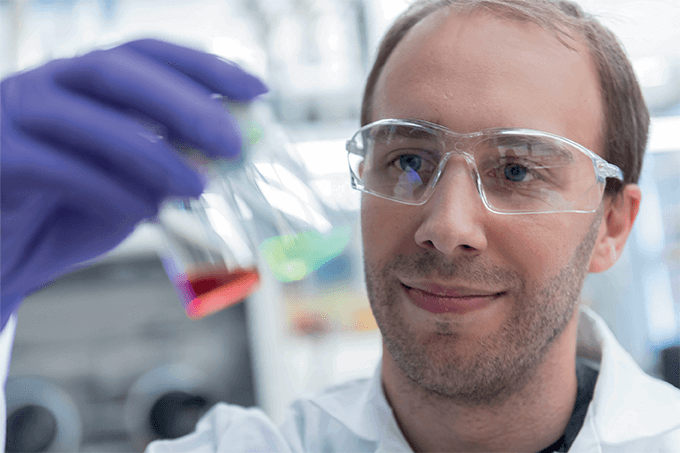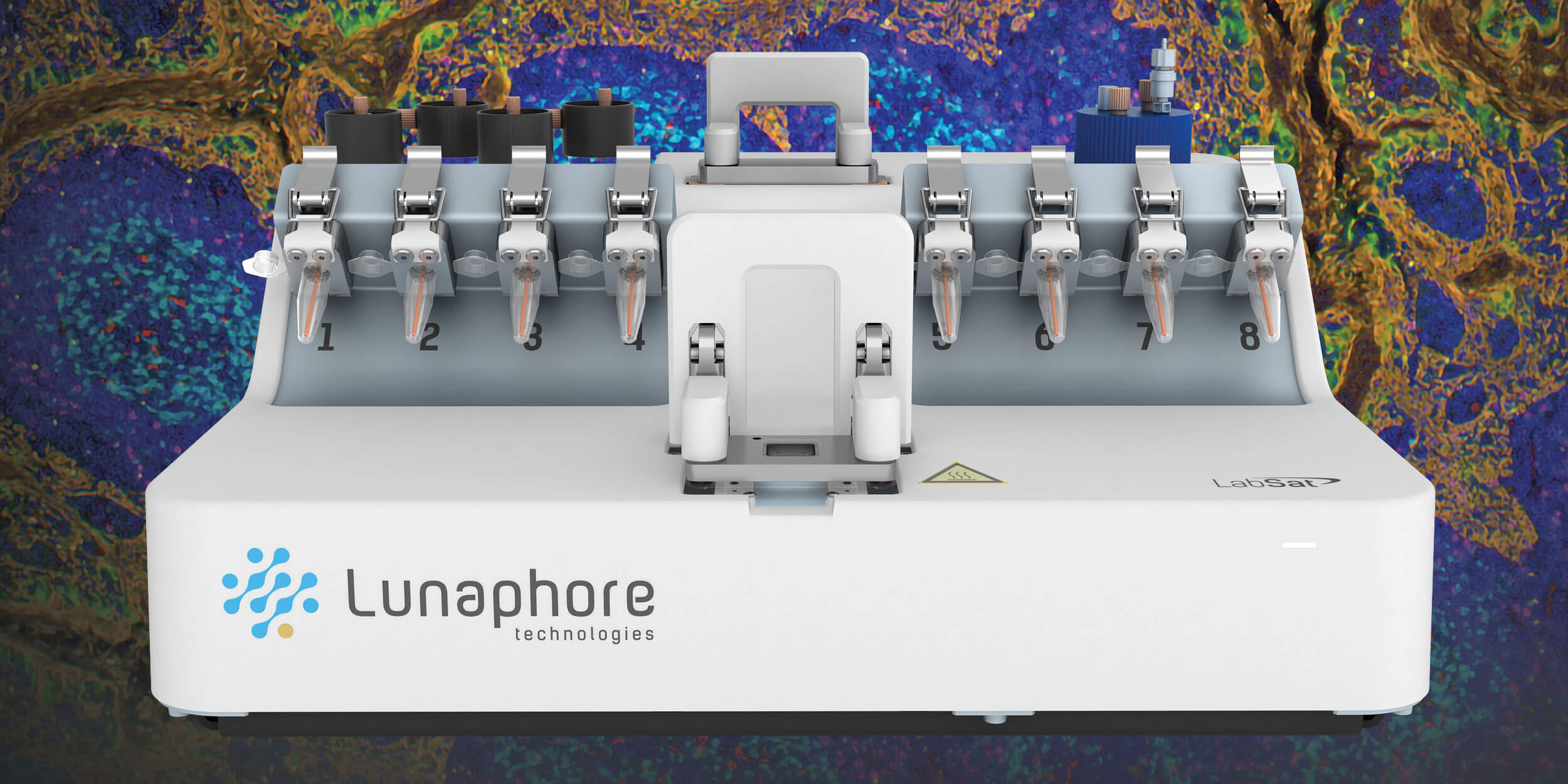Clinical Translation Through Innovation
Advances in mass spectrometry and separation science are bringing genome-scale proteomic analyses within our reach. Thomas Conrads, Associate Director of Scientific Technologies in the Inova Schar Cancer Institute and Chief Scientific Officer of the Women’s Health Integrated Research Center at Inova Health System, describes how his lab applies the power of proteomic tools to help women with cancer.
sponsored by Thermo Fisher Scientific
What led you to clinical translational research?
Growing up I wanted to be a physician. That lasted until I volunteered in an emergency room, and realized that a doctor can only help one person at a time. As a biomedical researcher, I can potentially help hundreds of thousands of people – but only if my discoveries can be translated into the clinic.
Innovators are people who, by definition, break the rules. And not wanting to follow the pack is something that has defined me ever since I was a child. If you want to innovate, you can’t look behind to see what others have done or to the side to see what others are doing; you have to look forward, with a resolute focus on where you are going – and how to get there.
You were an early adopter of proteomics…
Yes – in fact, when I started my post doc in 1999, the term “proteomics” had only just been coined. Only a handful of labs were working in the field and most were focused on mass spectrometry research and development. It became clear that there was an opportunity to move proteomics from a demonstration science into an applied science, with an eye to eventual application in the clinical laboratory. Our expectation is that proteomics will follow in the footsteps of genomics and, in combination with other omics techniques, provide the actionable information needed to have an impact on patient care.
I’ve always been attracted to the interface between different disciplines. When I started out in my research career, I was interested in the interface between biology and chemistry. Later, it became clear to me that there was a huge knowledge gap between scientists, technologists and clinicians, and for the past 15 years I have been actively conducting research at the interface of science and biomedicine.
Why is the right technology so important?
The right tools are critical for clinical translational research. Many people are disappointed in the output of genomics. The US alone has spent billions developing and using genomics, in the hope that better understanding of the cancer genome would lead to a revolution in the way we treat cancer patients, for example. So far, the revolution hasn’t come. However, genomics has taught us a lot about cancer biology – it has laid bare the complexity of the problem we’re facing. Genomics is an important tool, but in cancer research we have seen time and again that one approach will not solve the problem. We need a multidisciplinary (and transdisciplinary) approach, analyzing the genome, proteome and metabolome to view cancer as a system rather than an ensemble of molecules.
There is a missing link between genotype and phenotype – the proteotype. If we don’t have measures at the protein level, we miss that vital link. I believe that proteomics today is at a similar stage that genomics was at in the mid-1990s – we’re right on the verge of a technology revolution. Advanced liquid chromatography (LC) systems coupled to cutting-edge mass spectrometry (MS) platforms (for example, those based on Orbitrap technology) are key to uncovering the complexity of the proteome. In short, I believe that the ability to gain genome-scale information from proteomic analysis using innovative LC-MS platforms is going to transform our ability to link genotype to phenotype in cancer.
What is driving the technology revolution?
Scientists are terrible at stabilizing anything – we like to play. For clinical science you need reproducible, validated and robust technology from day one to day one thousand. And that is exactly where advances in engineering – driven by vendors – is coming to the fore. Vendors have made the technology more stable, so they can reach a larger end-user base. In the 1990s, mass spectrometry systems were mostly being sold to a relatively small group of expert labs. But as the technology is stabilized and made suitable for routine use, the potential is huge.
What is the goal of your current research?
Over the past six years at the Women’s Health Integrated Research Center, I have been strongly focused on translational science. We aim to bring genomics, proteomics and functional biology together to benefit women with gynecologic cancers – a historically underserved population. We have research initiatives in early detection, chemoprevention and novel therapeutics, plus a major program in molecular profiling to guide cancer therapy. Our research is driven by clinically relevant and medically justified needs – in other words, problems that physicians face daily in the management of their patients.
What are some of the problems faced by doctors treating gynecologic cancers?
Choosing the best therapeutics for the individual patient is often a challenge. For example, in ovarian cancer there are no known driver mutations, like EGFR in lung cancer, to help stratify patients to specific therapeutic options. Therefore, most patients receive standard-of-care cytotoxic chemotherapy. And while 80 percent do respond initially to this standard-of-care therapy, most do eventually recur with chemo-resistant disease. One of the areas of research we’re involved in is trying to better understand the risk factors, so we can tailor treatment to prognosis. To help these patients, there is no point studying normal versus cancerous cells – instead we need to know what makes the patient’s cancer unique to them.
No easy task…
The primary roadblock we have experienced is the quality of patient specimens. In a recent study looking at markers of metastasis in endometrial cancer, we had a study design that required 300 specimens. When our histopathology group and consulting pathologist reviewed the 300 samples provided by a national cooperative group, only 40 percent were viable for cancer research – the other 60 percent were either necrotic, didn’t contain cancer, or were the wrong cancer type. In the end, it took five years to get enough samples to achieve the appropriate statistical power to reach our end point. As you can imagine, that five-year delay has a real impact on studies.
To help overcome these issues, we have generated our own College of American Pathologist (CAP) accredited biorepository for gynecologic cancer patient specimens. We have a consortium of hospitals providing specimens from both newly diagnosed and recurrent ovarian, uterine and cervical cancer patients. Our samples are highly qualified, validated for quality and have a wealth of data from patient questionnaires – around 600 epidemiological data points for each patient.
That’s a lot of data – how do you make sure you make the best use of it?
The biggest lesson I’ve learned is that more data doesn’t necessarily equate to more understanding. For people who are new to translational research, there is often a sense that if we collect more and more data, greater understanding will result. But without an extremely directed, clinically guided question or hypothesis – along with proper controls and sample sets – gathering more and more data simply muddies the water. I see two key aspects to making a clinical translational research program successful:
- a clinically relevant focus,
- partnerships for onboarding and application of high-end technologies.
In fact, without industry partners who are technologically innovative you will likely fall behind the curve. Having partners who are engaged, who want a dialog, and who actively want to see their products used for translation, is extremely enabling in clinical translational research. Those are the partners we seek out.
How do you see your work evolving?
I recently took on the role of Associate Director of Scientific Technologies at the Inova Schar Cancer Institute, which is a real opportunity to broaden my research base beyond women’s cancers, and bring the research environment and philosophy that we have honed for the past six years to a much wider spectrum of cancers.
In the longer term, healthcare reform is going to continue to contract budgets and make it extremely important that the right management approach is provided to patients at an acceptable cost to payers. I believe budget constraints will provide an opportunity for precision medicine, because it dovetails with the need for increased efficacy and reduced costs.
What keeps you motivated?
The thought that we might be on the verge of the next great discovery gets me up in the morning and keeps me focused on the goal at hand; there is real progress being made, in our lab and others. As we bring more sophisticated levels of information to bear, we are finding actionable opportunities for patient stratification. The ultimate goal for any clinical translational researcher is to make patient care better and more affordable, and I believe we are starting to achieve that.

Thomas Conrads is Associate Director of Scientific Technologies in the Inova Schar Cancer Institute and Chief Scientific Officer of the Women’s Health Integrated Research Center at Inova Health System.















